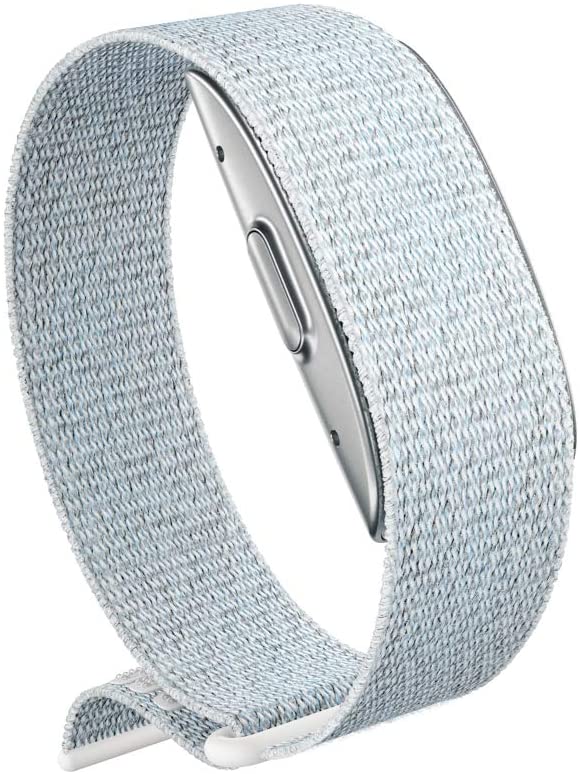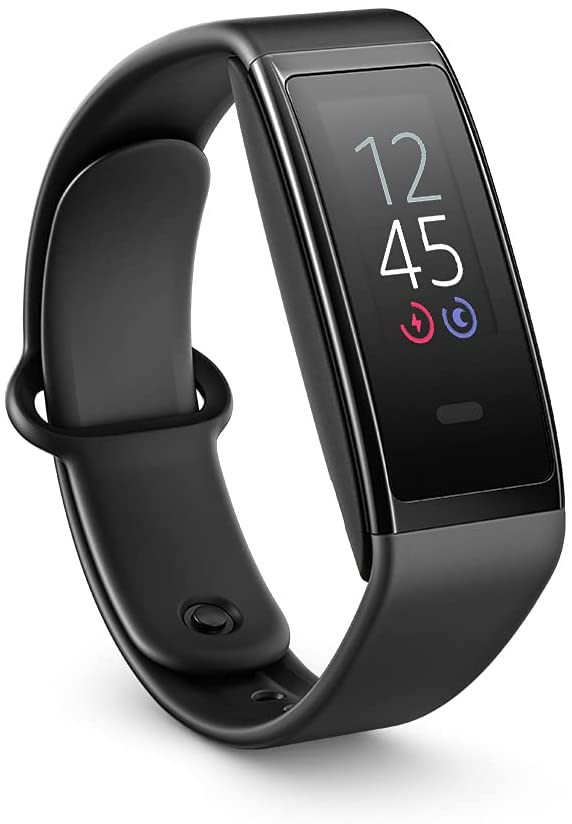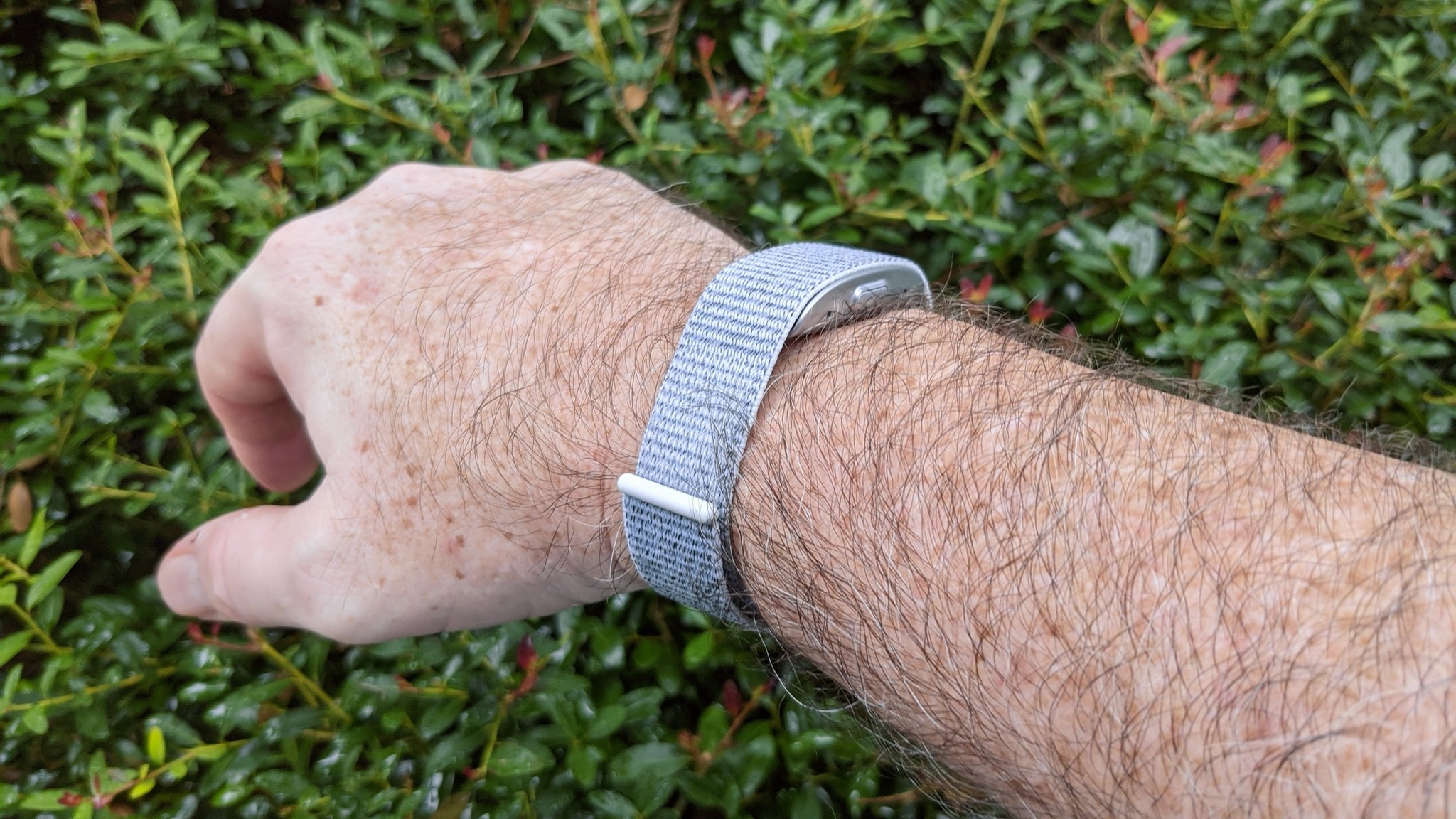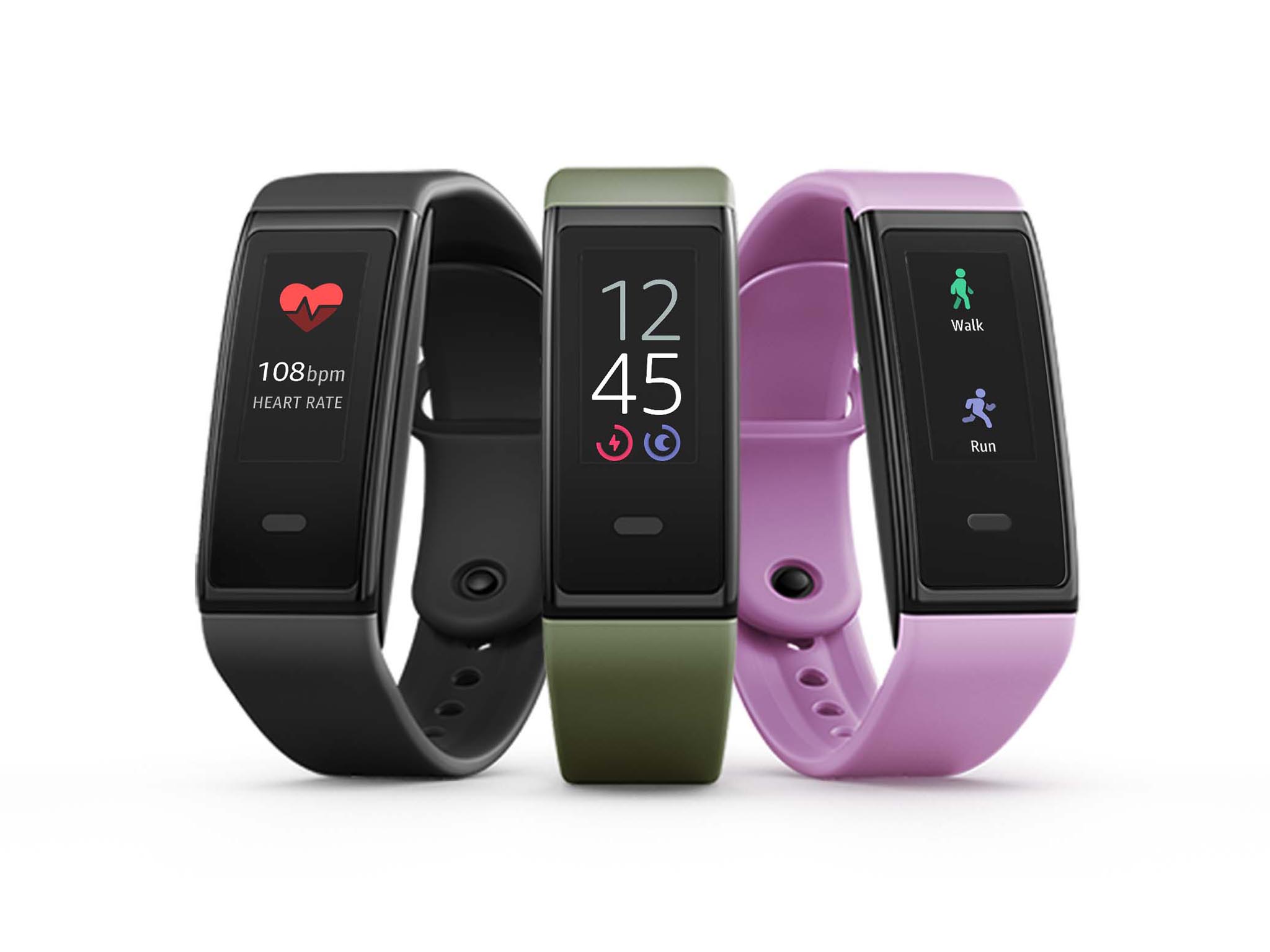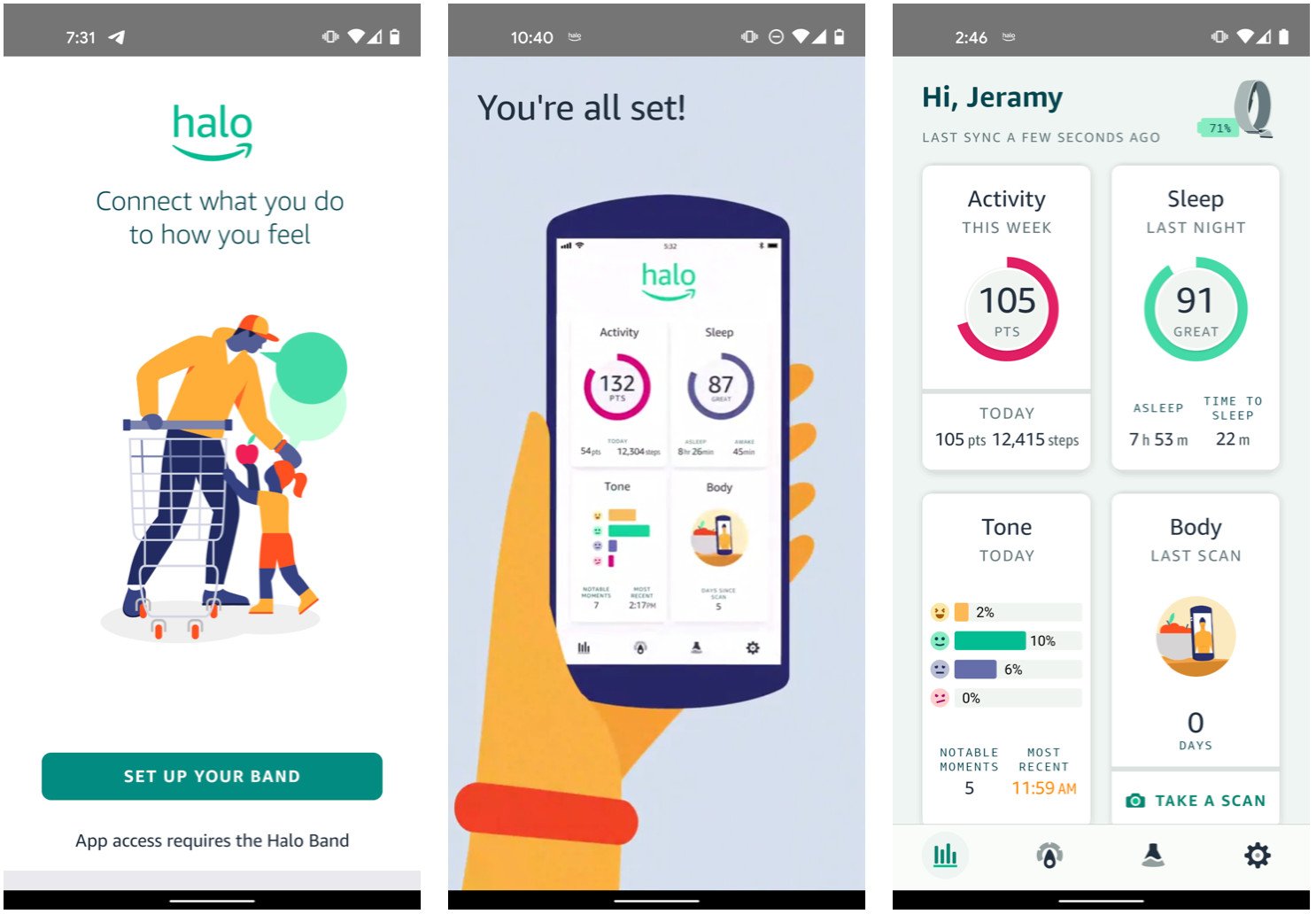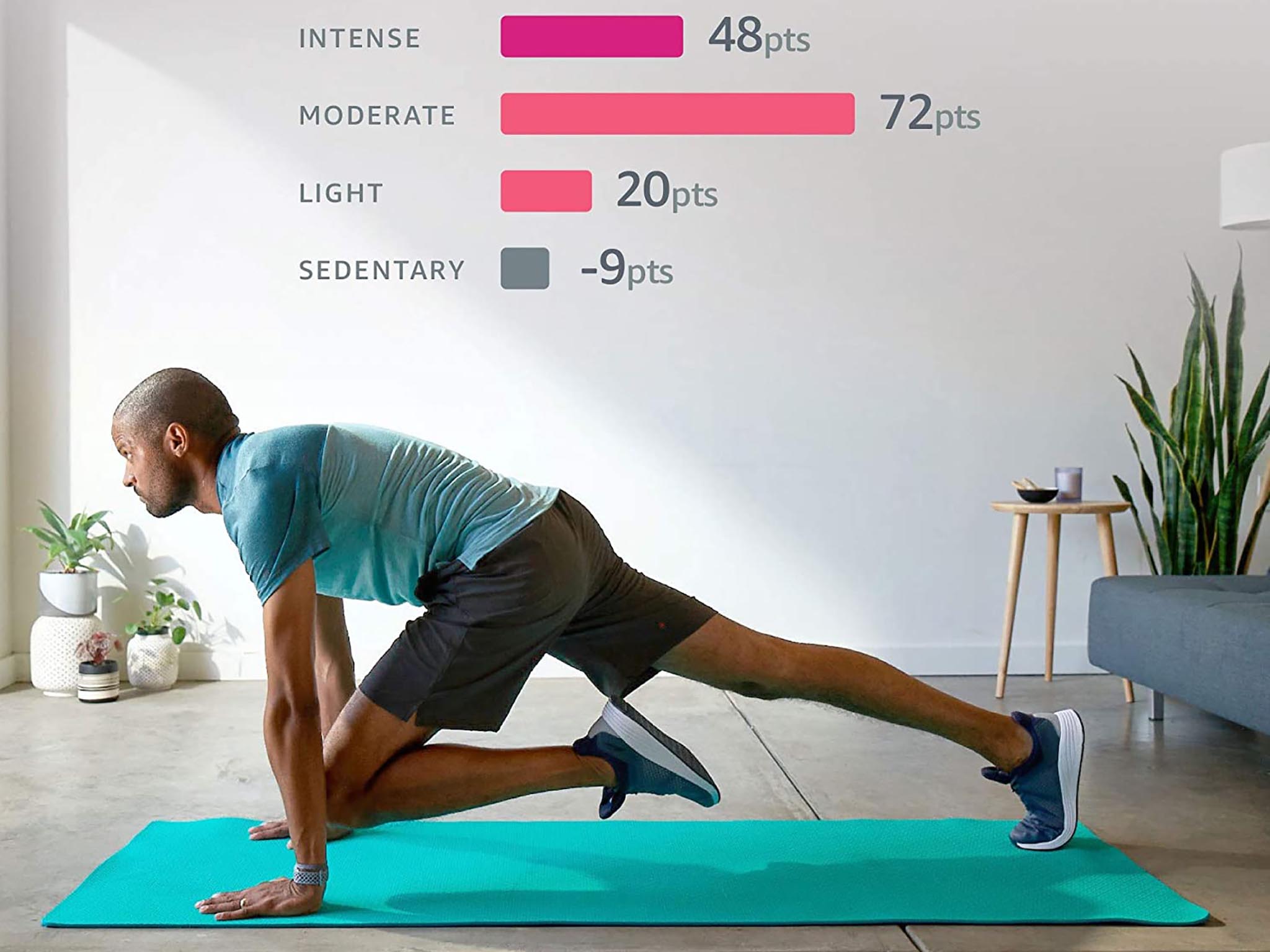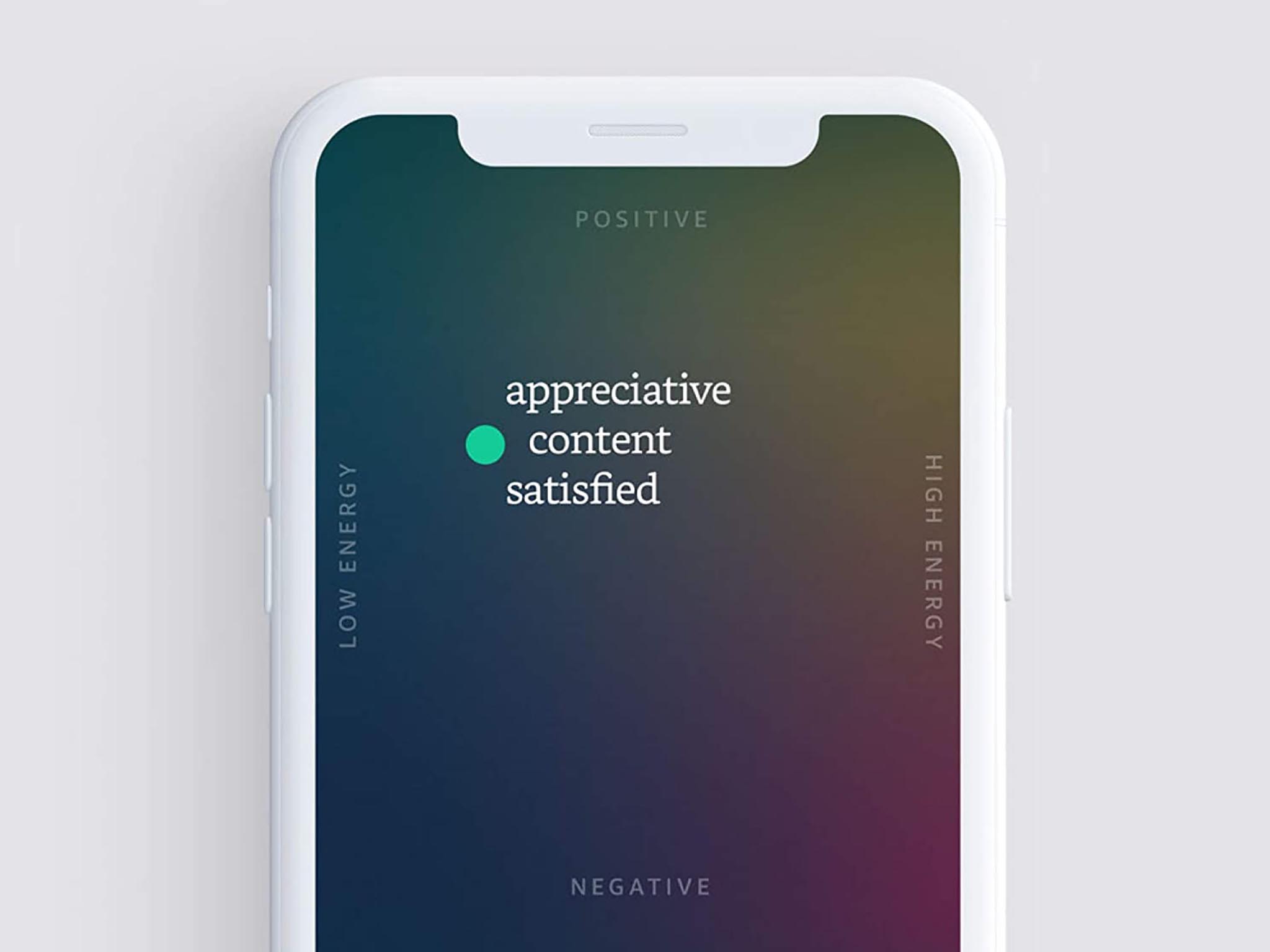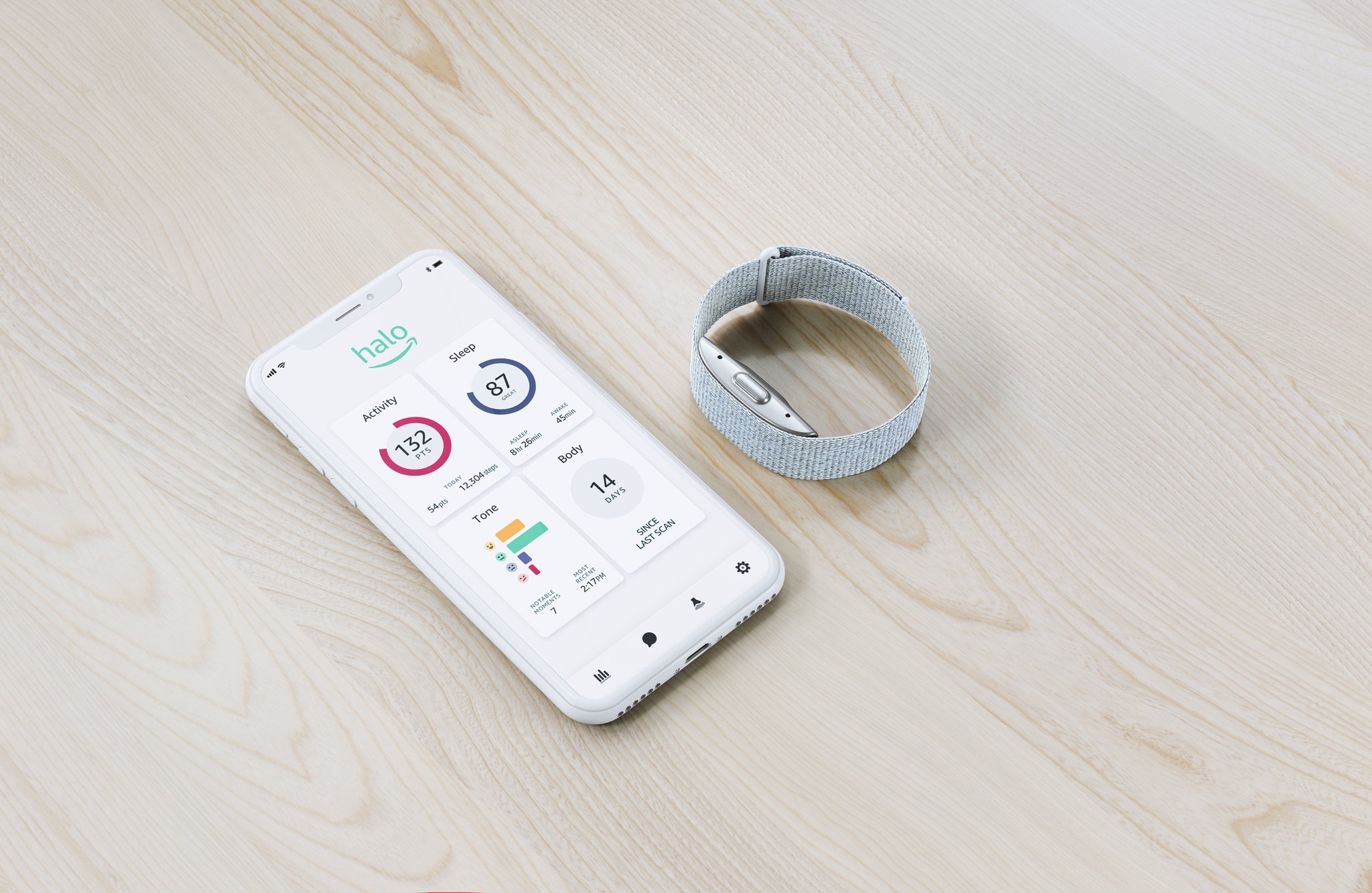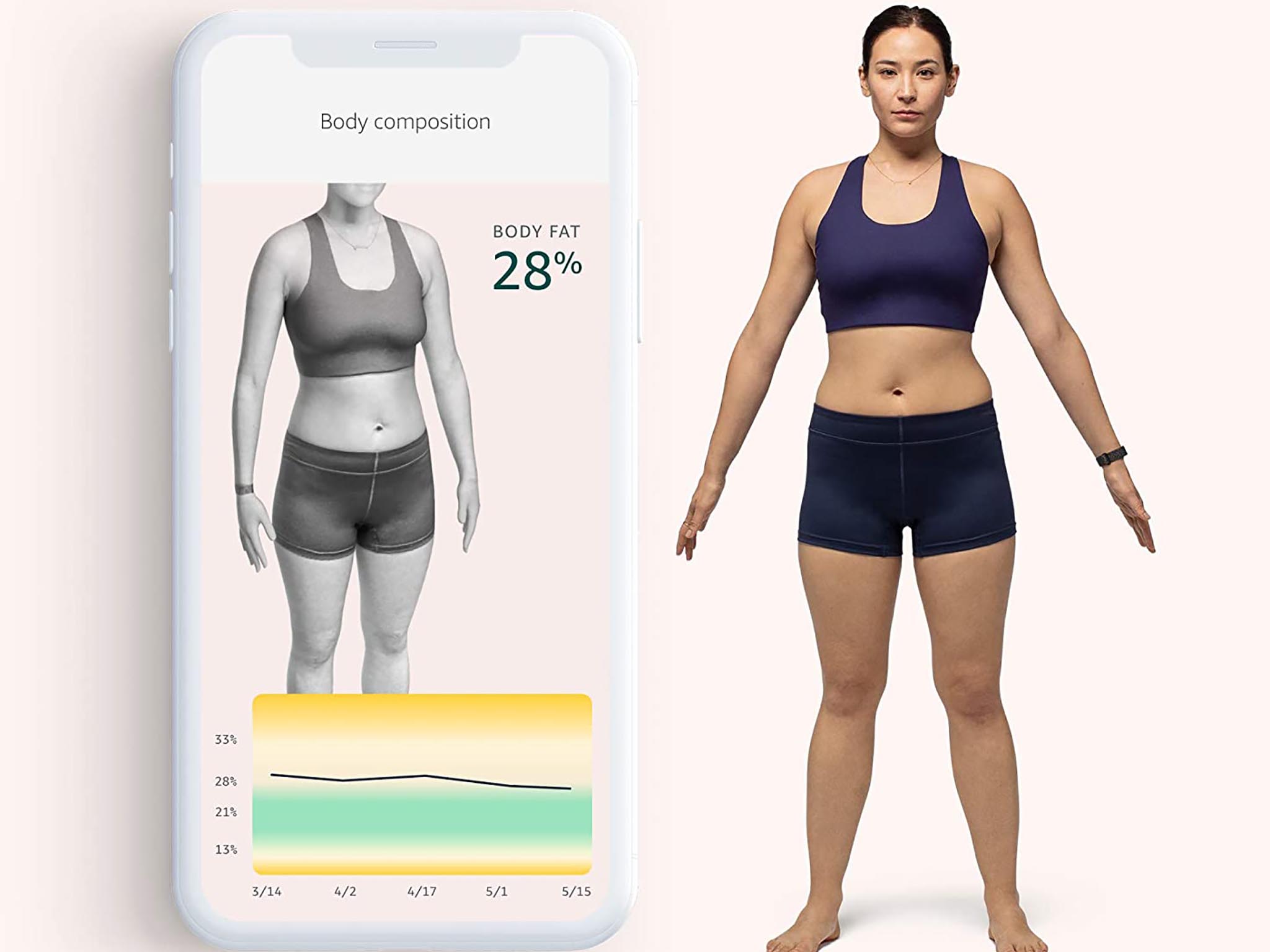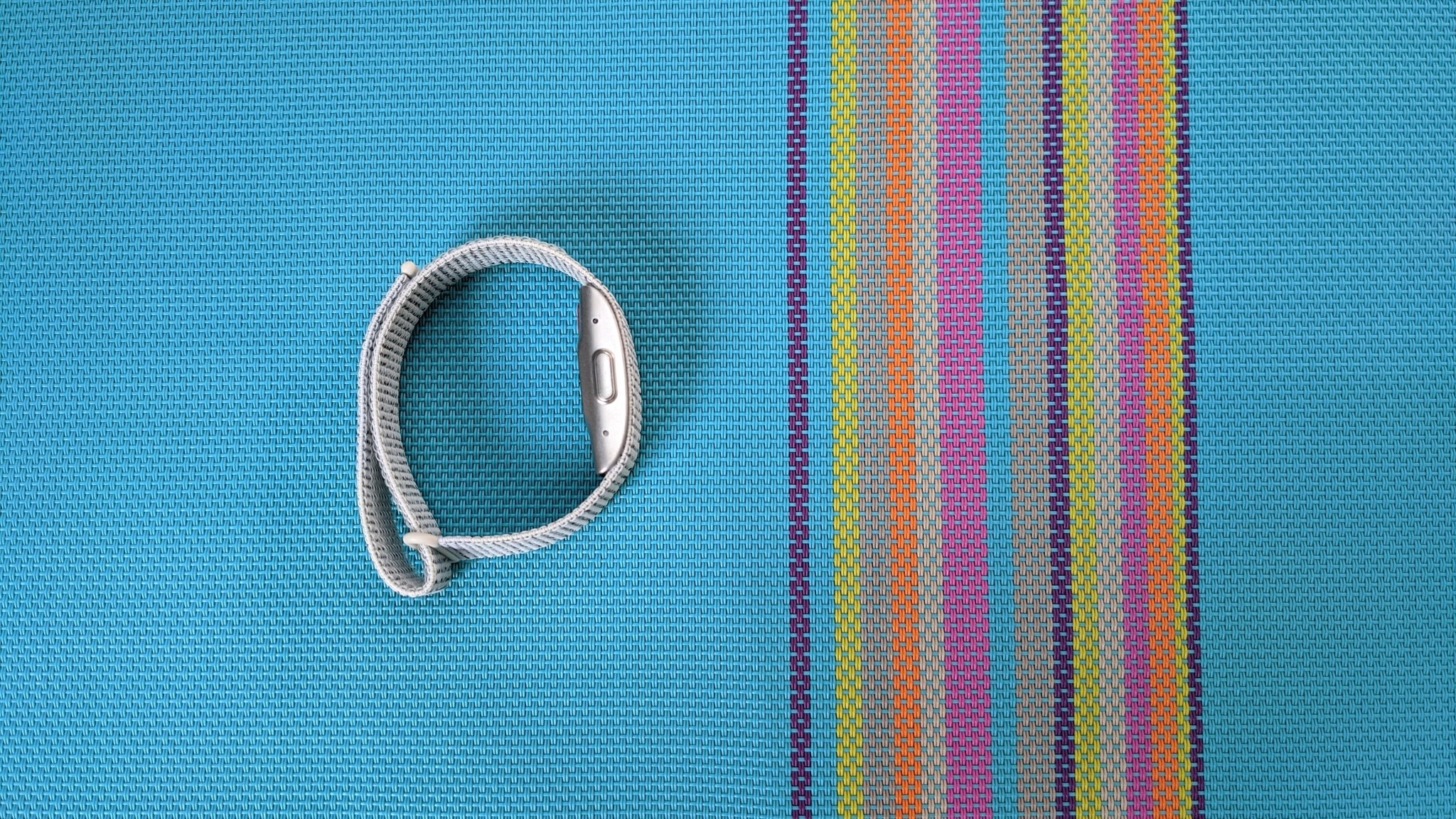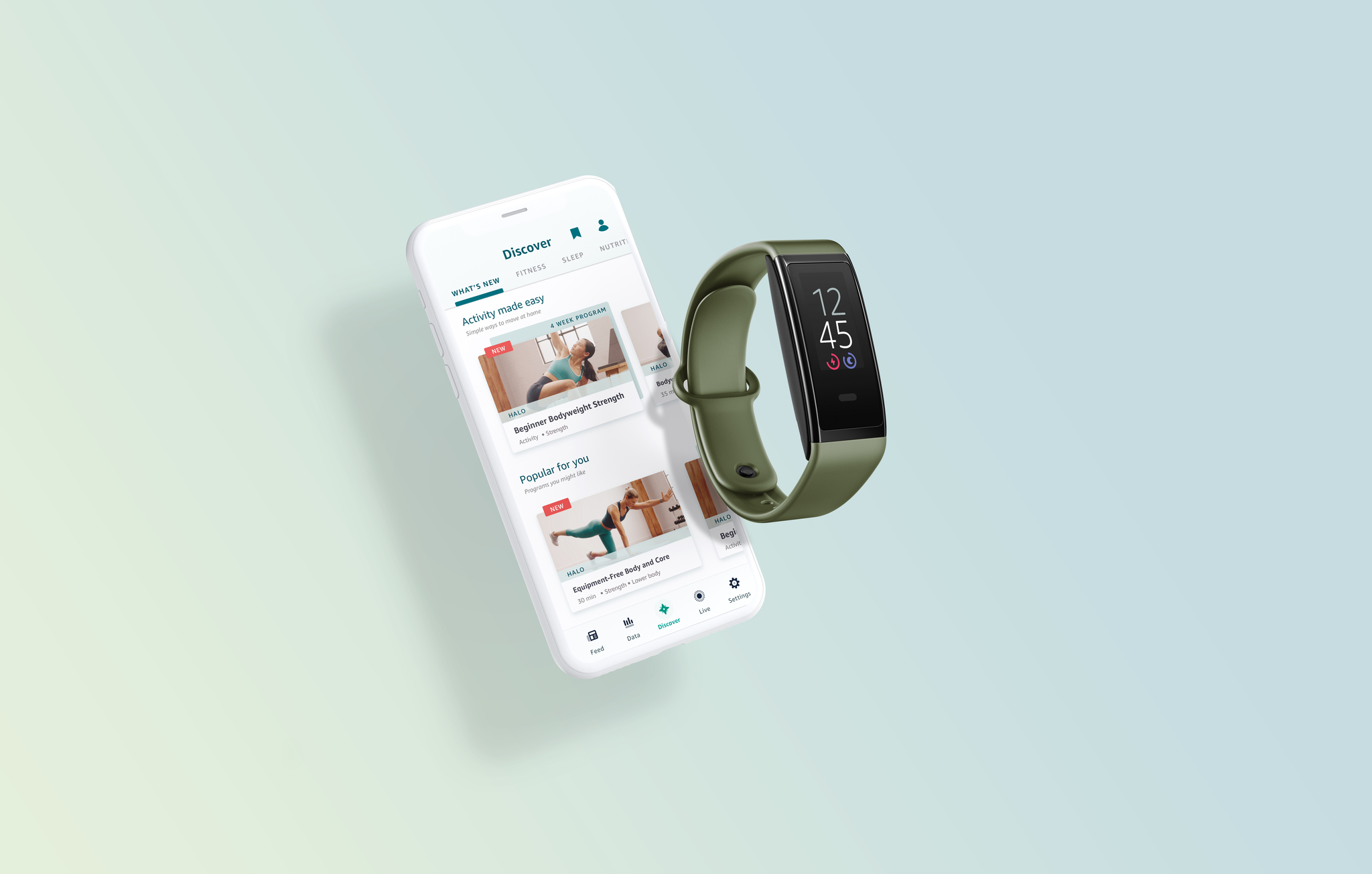No distractions
Amazon Halo
Pros
- No screen means no distractions
- Cool added features like recipes
- Decent battery life
- Unique Tone analysis feature
Cons
- Requires a subscription to access all features
- Some might prefer having a screen
- Limited functionality
Amazon Halo is a decent option for a simple, entry-level fitness tracker to decide if you need something more or simply want to keep track of basic activity such as sleep, workouts, and heart rate. But keep in mind you need to subscribe to get the most out of it.
Add a screen
Amazon Halo View
Pros
- Adds a screen
- Decent battery life
- Your data is kept safe and secure
- Cool added features like recipes
- Unique Tone analysis feature
Cons
- Requires a subscription to access all features
The main upgrade with the Halo View is the addition of a color touchscreen, which provides at-a-glance information, from daily step counts to heart rate, workout stats, sleep data, and incoming notifications. It also does away with the built-in mic.
When it comes to wearable devices, Amazon probably doesn't initially come to mind. While the company has tons of great products in a variety of tech categories, the Amazon Halo is still relatively new. Like other fitness and health trackers, the band is a simple wrist-worn device that measures everything from your activity to your sleep. However, when looking at the Amazon Halo vs. Halo View, there are some apparent differences.
| Amazon Halo | Amazon Halo View | |
|---|---|---|
| Screen | No | Yes |
| Connectivity | Bluetooth 5.0 | Bluetooth 5.0 |
| Mics | 2 built-in for Tone analysis | None |
| Swim-proof | 50M | 50M |
| Membership Option | Yes | Yes |
| Colors | Black/Onyx, Winter/Silver, Blush/Rose Gold | Active Black, Lavender Dream, Sage Green |
| Band Sizes | S, M, L | S, M |
| Band Material | Fabric Blend, Silicone for Sport | High-performance TPU |
| Interchangeable Bands | Yes | Yes |
| Battery Life | Up to 7 Days (2 Days with Tone enabled) | Up to 7 Days |
| Phone Requirement | Android 7.0+, iOS 12.0+ | Android 8.0+, iOS 13.0+ |
The two trackers are similar, with a couple of key noticeable differences. First and foremost, the Halo View has a touchscreen while the Halo does not. But there's more than that: The Halo also adds mics to access the interesting Tone analysis component available while the Halo View removes the feature. Yet one thing similar is you need a subscription to access many of the most compelling features with both of them.
Amazon Halo vs. Halo View: How do they look?
The main difference in how these two trackers look is the absence of a screen in the Amazon Halo. Instead, it's simply a band covered in fabric the entire way around. The material is a blend of woven polyester, nylon, and spandex, while the sport band is made from high-performance silicone. It comes in small, medium, and large sizes for the fabric version and small/medium or medium/large for the sport.
By contrast, the Halo View has a small color touchscreen that provides at-a-glance information, including notifications from a Bluetooth-connected and compatible smartphone as well as daily stats and the time and date. Its band is made of high-performance TPU, and it comes in small/medium and medium/large sizes.
The Halo comes in three color combinations: black/onyx, winter/silver, and blush/rose gold, while the Halo View's band comes in Active Black, Lavender Dream, or Sage Green. With both, you can swap out the bands for other styles as desired, and there are already some great band options for the Amazon Halo View.
Both are swim-proof down to 50 meters (5 atm), but the Halo comes with a pair of built-in mics for Tone analysis (more on this later). In addition to the sensor and band, each comes with a USB charger or clip and a Quick Start guide.
The main difference here, as noted, is the screen. While the price difference between these two is nominal, the main reason you might want to opt for the Halo instead of the Halo View is if you deliberately want to avoid distractions. The Halo looks more like a bracelet on the wrist, requiring you to log into the app to see where you're at for the day in terms of step, sleep, heart rate, and more. Otherwise, it quietly does the work in the background as you go about your day. If you prefer to see everything on your wrist, including notifications of things like incoming texts, the Halo View is the best choice between the two.
Amazon Halo vs. Halo View: Stand out features
Both trackers can log steps, heart rate, sleep time, activity, and sports. The Halo offers access to a library of workouts from sources like Lifesum and SWEAT (with the subscription — more on that later) and intensity-based activity tracking. With the Halo View, you can access programs like HIIT and strength, yoga, barre, walking, and low-impact workouts, ranging from five minutes up to an hour, once again, however, with the subscription.
Because the Halo View has a screen, you can follow along with live workouts and get reminders from your wrist and other phone notifications. You can also access tons of on-demand activities along with meditation, sleep, and nutrition support. There are even body composition measurements with both devices that will assess your body fat percentage using your phone's camera and the app.
The Halo View adds movement assessment with the app and can help you develop a personalized exercise program. It also offers on-demand blood oxygen levels measurement, not included with the original Halo.
Both offer a neat feature called Tone of Voice analysis, which tells you how you sound to others, like your kids, significant other, or colleagues. It's designed to help you strengthen your communication. The Halo has two built-in mics to measure this, while the Halo View uses your phone and the app. There was some criticism about the privacy and security implications of having mics in the Halo, which likely prompted Amazon to eliminate the mics from the Halo View.
There are also neat added-value features, including measuring both the quantity and quality of your sleep, daily meditations from experts like Headspace, and access to more than 450 recipes from experts through Whole Foods.
Both also work with Alexa and boast a seven-day battery life, though that drops to two when you have the Tone analysis feature activated on the Halo since it calculates this using its built-in mics.
If you're looking for a budget tracker for serious workouts that you can also use to keep on top of your day, the Halo View is the better option. If you just want to track daily activity and the odd workout, run, walk, or even bike ride, the Halo will do the trick, too. But you'll get more value with the screen of the Halo View unless you're genuinely looking to avoid distractions. Keep in mind that without the screen, you'd need to use your phone anyway to view data from the app, which could encourage you to pull up your phone more often.
Amazon Halo vs. Halo View: What do you get without the subscription?
Many of the features discussed here require a Halo subscription, which costs $3.99 per month, a nominal fee but still yet another bill to add to the list. The Halo does come with a six-month free trial and the Halo View with 12 months, both auto-renew at the end of the term unless you cancel. But chances are, once you have it, you will decide to keep it.
Without a subscription with both, you get fundamental tracking, including limited access to workouts, heart rate tracking, calories burned, time awake and sleep, as well as sleep temperature. However, if you want features like body composition measurements, activity tracking, detailed sleep analysis, Tone analysis, movement health, and personalized improvement plans, you'll need to sign up.
Thus, both trackers are great and affordable entries into the world of fitness and health tracking, but to get the most out of them, you need to factor the recurring cost of the subscription into the price as well once the free trial period expires.
Amazon Halo vs. Halo View: Which should you buy?
Given the nominal cost difference between the two, both frequently go on sale, and the fact that the Halo View is the latest model, it makes more sense to go with that model when deciding between the Amazon Halo vs. Halo View. The only reason to opt for the Halo is to eliminate distractions on your wrist. But if this leads to the temptation to grab your phone and check on things more often than you might tap your wrist, it could have the opposite effect. If you think you'd be fine doing what you do and checking in via the app once a day, though, then the simplistic, screen-free design might appeal to you.
With that said, the ability to queue up a workout right from your wrist and even follow along with it via live workouts makes the Halo View a more compelling option. Add to that blood oxygen level measurement, which is a valuable feature particularly for those with respiratory issues or sleep apnea, and it's a worthwhile upgrade.
While the included mics for Tone analysis are neat in the Halo, chances are the feature will be more gimmicky than anything else, used a few times and abandoned after that. Plus, if you're concerned about your privacy and security, you might prefer not to have the built-in mics at all. Note, however, that Amazon says your personally identifiable health data is kept secure, and you can delete or download your data at any time.
Regardless of which model you decide on, it makes sense to get the subscription. But if you aren't a fan of adding another recurring subscription fee to the list, there are tons of other affordable fitness trackers you can find that cost slightly more, or even a bit less that don't require a subscription.
Listening in
Amazon Halo
No distractions, built-in mics
$50 at Amazon $50 at Best Buy $50 at Target
The only reason to opt for the Amazon Halo over the Halo View is to keep distractions at bay since it doesn't have a screen. But the built-in mics for Tone analysis could be a dealbreaker for you, and the Halo View adds compelling upgrades without bulking up the price.
Worthy, entry-level fitness tracking
Amazon Halo View
A solid fitness tracker
$60 at Amazon $60 at Best Buy $60 at Target
You'd be better off with the Amazon Halo View, which offers compelling upgrades like blood oxygen measurement, a color touchscreen, and an additional six months on the Halo subscription trial. Plus, it does away with the built-in mics.
Source: androidcentral
